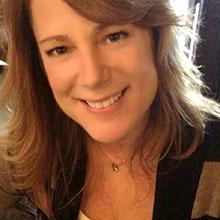We Make Dead People
(Inside Science) -- This might look like Doctor Frankenstein's lab -- but it’s not. Christopher Sakezles and his company make dead people -- all in the name of science.
“SynDaver labs is a company that makes synthetic people and synthetic body parts, for medical testing, medical training, surgical simulation, that sort of stuff,” says Sakezlez.
“The human model we make is a very detailed anatomical model, that just happens to also be useful for surgical trainings,” states Sakezlez.
It’s so that the doctors of the future can practice on lifelike bones and brains.
“In pictures it might look like plastic, but no it’s not. All of materials that we use, and we've got about a hundred different analogues at this point -- they're made of salt water and fiber. If you look just at the adult synthetic human assembly line, we've got people separated into pods. So you've got a group that does just muscles, and one that does just skeletons, and one that just does vasculature, one that does organs, and then there's a final assembly group that kind of puts it all together,”says Sakezles.
“It takes somewhere between 500 and 600 man hours to make each one of the bodies. So you know the skeleton takes a long time to make, the skin takes, it’s a huge organ, takes a long time to make. There are a hundred and five different muscles that go into it. You've got all the organs and depending on the customer, there's different little levels of detail in the organs, so it takes a long time and a lot of people to make even one of them,” says Sakezles.
Sakezles started with one goal and ended up with two successes.
“We didn't set out to stop the use of live animals. We set out to create a better way of doing experimentation. It just happens that it's, in most cases, a better alternative to live animal use. That's what it's all about -- saving time and saving money, and as a byproduct we save animal life,” says Sakezles.
“We've got a lot of stuff in process. So we’re, you know, we've made a few infants and a few preemies,” says Sakezles.
“But it’s not all about making dead human bodies -- there’s more creatures waiting to be developed. We’re going to start on cats next. We'll also be doing dogs and horses. We have gotten request for a dolphin, turtles, and fish,” says Sakezles.
It’s body-building science that may help save lives, with a soft spot for animals thrown in.
“I happen to love animals, so I love that what I do saves animal lives, in addition to human lives. It's just it's very rare to be presented with an opportunity to make a difference in the world,” states Sakezles.

